 |
| spot cleaning |
good tips for spot cleaning
1. Products made of artificial silk fabrics cannot be immediately cleaned without a sample using such means as acetone, hydrogen peroxide, oxalic, acetic and citric acids.
2. Stains on artificial leather products cannot be removed with alcohol, gasoline, acetone, but only with warm soapy water.
3. Stains from fruits and fruit juices can be removed with a solution of glycerol and vodka (in equal parts), and also if you hold the cloth over dishes with boiling water and wipe the stain with vinegar.
4. Remove old stains on clothes with heated lemon juice, holding the product over dishes with boiling water.
5. You can also remove the stain with lemon juice diluted in half with vodka or methylated spirits, then wipe with a cloth moistened with a solution of water with ammonia.
6. Fresh stains from apples, raspberries, cherries will be washed off with a swab moistened with warm milk and soapy water.
7. Stains from fruit juice should be wiped with ammonia in half with water, then wash the entire product.
8. Wine stains on a dress made of cotton can be removed with boiling milk.
9. Fresh spots from red wine, fruits should be covered with salt and washed with soap and water or wiped with a 5% solution of ammonia, and then washed.
10. Wipe the stains of white wine and champagne with glycerin, heated to 40-50 degrees, then rinse with warm water.
12. Wine stains disappear if thoroughly washed in warm milk, then rinse first in cold and then in hot water.
13. Beer stains are removed with warm ammonia, then the fabric is stretched in warm soapy water.
17. Such spots on white tissues are moistened first with ammonia, then with a hydrosulfite solution (a pinch of hydrosulfite in a glass of water) and after 2-3 minutes with a solution of oxalic acid (a pinch of acid in a glass of water).
18. Lipstick stains on wool and silk are easily removed with pure alcohol.
19. The stain from hair dye can be removed with a solution of hydrogen peroxide with ammonia or a solution of hydrosulfite (1 teaspoon per glass of water). To do this, the solution must be heated to 60 degrees and a cotton swab dipped in it, wipe the stain. Then wash the item in warm soapy water.
20. Sweat stains disappear if a little ammonia is added to warm soapy water when washing the product (1 teaspoon per 1 liter of water). You can also wipe the stain with a mixture of vodka and ammonia.
21. Sweat stains on a woolen product can be removed with a cloth soaked in a strong salt solution; you can also wipe them with alcohol.
22. The stain of dirt cannot be cleaned immediately when it is still wet. It is necessary to allow the stain to dry, clean the sweats with a weak solution of borax and wipe with a dry rag.
23. Stains from frozen milk are excreted in a mixture in equal parts of glycerin, ammonia and warm water. Wipe the stain with this mixture, and then wash the item in warm water.
24. Milk stains are removed in cool soapy water or in water with the addition of borax or ammonia.
25. The stain from potassium permanganate will disappear if the contaminated place is wetted in serum or yogurt for 3-4 hours, then the item should be washed.
26. The stain from potassium permanganate on a white cloth can be removed with a solution of oxalic acid. One teaspoon in 1/2 cup of water, after which the thing should be washed in hot, then in warm water.
27. Tea stains are removed with a mixture of glycerol and ammonia (4 parts glycerol and 1 part ammonia). Old stains on white cloth are best removed with oxalic acid solution (1/2 teaspoon per glass of water) or hyposulfite solution (1 teaspoon per 1/2 glass of water). Then clean the thing, wash in soapy water, adding 2 teaspoons of ammonia to 1 liter of water, and rinse well.
28. Tea stains on a white cloth can be removed with hydrogen peroxide or a few drops of lemon juice, after which the thing is washed and rinsed in warm water.
29. Stains from coffee and cocoa are removed with ammonia, half diluted with water. A particularly good effect is achieved if you first wipe the stain with gasoline.
30. Coffee, cocoa stains on thin silk dresses can be removed if the stain is moistened with warm glycerin and left for 5-10 minutes, then rinsed in warm boiled water.
31. Coffee and cocoa stains disappear if you wash the item in warm salt water and rinse in cold.
32. Coffee stains are completely removed by hydrogen peroxide.
33. Chocolate stains are removed with boiling soapy water.
- on cotton fabrics - cover the stain with a layer of finely crushed dry chalk, put blotting paper on top and spend several times with a warm iron;
- on silk and wool fabrics - clean the stain with turpentine, then cover it with a thin layer of dry clay, put blotting paper on top and iron it with a warm iron; from a white cloth - moisten the stain with hydrogen peroxide, - then wash the thing and rinse in warm water;
- on colored and dyed fabrics - moisten the stain with ammonia. But first you need to try on a separate piece, whether it affects the color of the fabric.
35. Fresh stains from mold can be removed by wiping the stain several times with onion juice or curdled milk serum, and then washing the item in hot water.
36. Tobacco stains can be removed as follows. Rub it with egg yolk mixed with denatured alcohol, wash the fabric in warm, then in hot water.
37. Fresh stain from eggs on silk and cotton cloth can be removed if washed in cold water, then rubbed with cotton wool soaked in a weak solution of vinegar, and then wash the product in warm water.
38. Ink spots can be removed:
- with a solution of ammonia and drinking soda (1 teaspoon of alcohol and 1 - 2 teaspoons of soda in a glass of water);
- lemon juice (for this you need to squeeze the juice on a cotton wool, apply to the stain, rinse the cleaned place with water, then wipe it dry with a linen cloth);
- from white tissues - a mixture of hydrogen peroxide and ammonia (one teaspoon per glass of water);
41. Stains from colored mascara are removed with an aqueous solution of borax or ammonia. Then the stain is washed with warm soapy water with ammonia.
42. Ink stains from the carpet are removed with boiling milk, lemon juice or a strong solution of citric acid or vinegar.
43. Such spots can also be removed if milk and acid are used successively.
44. Fresh ink stains on an unpainted floor, first of all, get wet with cotton or blotting paper, and then moisten with lemon juice, a strong solution of vinegar or oxalic acid.
45. Ink stains from linoleum are removed with sandpaper or pumice. After such processing on the linoleum there are traces that need to be thoroughly wiped with vegetable oil (preferably linseed oil) or drying oil, and then well polished with a soft woolen cloth.
46. Spots from vegetable oil can be removed with kerosene. To do this, use a cloth dipped in kerosene to gently rub the stained area, then wash the item in warm water and soap.
47. Fresh grease stains on products made of wool or silk can be removed by sprinkling the stain with talcum powder, covering with blotting paper and ironing with a not very hot iron. Talc can be left until the next day. If the stain has not been removed, you need to rub it with cotton wool moistened with purified gasoline. Vata needs to be changed from time to time. Sprinkle the treated place with talcum powder and leave for 1-2 hours to absorb gasoline. Instead of talc, you can use chalk or tooth powder.
48. Old grease stains are well cleaned if coated with a mixture of 1 part ammonia, 1 part salt and 3 parts water, then hang the item for ventilation and then wash in clean water.
49. Fresh fat stains are well removed by pulp of warm bread.
50. Fresh grease stain can be removed by sprinkling it with salt and rubbing it gently. Change the salt several times until the stain disappears. Instead of salt, flour can be used.
51. Grease stains from carpets can be removed with a mixture of gasoline and synthetic detergent powder. This mixture should be rubbed into a stain, and left for several hours, then rinse with hot water. For old stains, repeat the cleaning.
52. Stains from water or any liquid are removed from oak furniture in two ways: a mixture of vegetable oil and salt is applied to the stain, then after 1 to 2 hours the mixture is removed, and the stain is first wiped with a wet rag, then dry and rubbed with wax; put ash on a stain from cigarettes mixed with a small amount of vegetable oil, then polish with a piece of dry woolen cloth.
53. White stains on polished furniture that appear as a result of contact with hot objects can be removed by rubbing the stain with a piece of paraffin wax, covered with filter paper and pressed with a not too hot iron. After a while, wipe with a soft cloth.
54. Grease stains from upholstered furniture can be removed by putting clay soaked in vinegar on the stain.
55. Stains of "green stuff" with light polished furniture can be reduced to an ordinary school pencil eraser. Having got wet a liquid, to rub with an elastic band.
56. Hard-to-clean stains on linoleum are removed with gasoline or ammonia.
57. To remove greasy stains from the parquet, it is necessary to sprinkle them with magnesia powder and after a while, sweep the powder.
58. Stains on books can be removed in the following ways: ink — rub the stain with peroxide of a 20 percent hydrogen solution, leave the moistened place to dry between two sheets of blotting paper, or brush the stain with a brush moistened first with alcohol and then with oxalic acid; rub the stain with soap, then with a clean damp cloth and leave to dry between two sheets of blotting paper; from flies - slightly moisten the stained places with ethyl alcohol or vinegar; fatty - put blotter on the stain, top off with a warm iron.
Do this until blotting paper has completely absorbed grease. If the spots are old, rub them lightly with a mixture of 1 teaspoon of magnesium a few drops of gasoline. Weak grease spots can sometimes be removed with a crumb of fresh warm bread.
59. Dirty binding on books can be cleaned with a mixture of egg yolk and a small amount of alcohol. Moisten a cloth with this mixture and rub the binding with it, and then wipe it with a woolen cloth to a shine.
60. Fresh acid stains should be immediately moistened with ammonia and then washed with water. Instead of ammonia, bicarbonate soda dissolved in water can be used (1 part soda to 5 parts water).
61. Stains of kerosene can be removed with gasoline by placing a piece of blotting paper, then sprinkled with burnt magnesia, covered with blotting paper and put under a press.
62. Stains from stearin, paraffin, wax from cotton, wool and silk fabrics of various colors can be removed with gasoline or turpentine, previously carefully scraping the stain.
63. Fresh such stains can be removed as follows: close the stain on the front and back side with blotting paper and iron it with a warm iron. Change the paper as it greases. Wipe up any remaining stains with denatured alcohol.
64. Moisten stains from iodine several times with water, and then rub with starch.
65. Such a stain can be removed by soaking it in a solution of ammonia and water (a few drops of ammonia in a glass of water). Then wash the item in soapy foam.
66. From colored tissues, spots from iodine are removed with denatured alcohol or acetone.
67. Blood stains should first be washed in cold water, and then with a warm soapy solution. Wipe the old spots with a solution of ammonia (1 teaspoon per glass of water), then with the same solution of borax.
68. Blood stains from thin silk products can be removed with a thick solution of potato starch and cold water. Lubricate the stain on the front and back sides with this mass, allow it to dry well, shake off and wash clothes if necessary.
69. Stains from rust from white fabrics can be removed with a hydrosulfite solution (1 teaspoon per glass of water). To do this, the solution must be heated to 60-70 degrees, lower the fabric with a stain in it for a few minutes, and then rinse in warm water.
70. You can also use a solution of acetic or oxalic acid (1 teaspoon per glass of water). After heating the solution almost to a boil, briefly lower the stained fabric into it for a few minutes, then rinse thoroughly by adding a little baking soda or ammonia to the water. If the stain does not disappear, you need to repeat the entire processing process again.
71. For colored fabrics, hydrosulfite is not recommended, since it discolors the color.
72. If the rust stain is weak, you can remove it with lemon juice. To do this, moisten the stain with juice several times, then lightly iron, then rinse with water.
73. There are special tools to help remove rust stains. - it is Tartoren powder and Universal bleach.
74. Rust can be removed from colored fabrics with a mixture of equal parts of glycerin, grated white chalk and water. Grate a stain with this mixture, leave for a day, and then wash the thing.
75. The tan marks from light wool products can be removed with an aqueous solution of hydrogen peroxide and ammonia (1/2 cup of water 1 teaspoon of hydrogen peroxide, a few drops of ammonia).
76. You can still moisten the stain with onion juice and leave for several hours, and then wash the product.
77. Tan spots on woolen, cotton and silk fabrics are removed with denatured alcohol.
78. Stains from fish, canned food and soup can be removed with a mixture of I teaspoon of glycerin, 1/2 teaspoon of ammonia, 1 teaspoon of water.
79. These stains can be removed from products from natural and artificial silk with a mixture of 1 tablespoon of glycerin, 0.5 teaspoon of ammonia and 1 tablespoon of vodka.
80. Stains from fish oil can be removed with a weak solution of vinegar.
81. Stains from sauces will disappear if moistened with glycerin, heated to 35-40 degrees, leave for 20 minutes, then rinse with warm water.
82. Tomato stains should be wiped with a 10% solution of oxalic acid, then washed with water.
83. Stains from flies are removed with dilute ammonia, and then washed with water. Products with old stains should be soaked for several hours in a soapy solution with a small addition of pure gasoline, then cleaned with a brush moistened with soapy water.
84. Stains from silicate glue can be removed with a hot soapy solution with the addition of 1 teaspoon of soda or a solution of 10 percent sodium fluoride.
85. Stains from casein glue are removed with heated glycerin. To do this, abundantly moisten the stain, leave for 1.5 -2 hours, then rinse with water with the addition of ammonia.
86. Spots from tar and wheel ointment can be removed with a mixture of equal parts of egg yolk and turpentine. After an hour, having removed the dried crust, rinse the stain with hot water. Old spots should be well saturated with turpentine, dried and moistened with an aqueous solution of drinking soda or ash, from time to time, moistening the stain with water. Moisten the place with turpentine and iron it through blotting paper with a hot iron.
87. Fresh resin stains should be moistened with acetone, gasoline or turpentine, then wiped with a cloth. Dampened in the same solvent, and covered with blotting paper, press with a hot iron.
88. Resin, asphalt, oil, gasoline, kerosene stains, if they are old, can be removed with a mixture of 1 teaspoon of potato starch with the addition of a few drops of turpentine and ammonia. Moisten the stain with the mixture and leave it to dry, then clean it well with a brush. If the stain does not disappear, repeat the entire processing process again. If a yellow spot remains, you can remove it with a weak solution of hydrogen peroxide.
89. Stains from floor mastic and shoe creams should be rubbed with soapy water with the addition of ammonia. If after that they do not disappear, you can moisten with a solution of hyposulfite and rub (1 teaspoon in 1/2 cup of water), then wash the thing in warm soapy water.
90. Fresh spots from soot and coal can be removed with turpentine. Moisten the stain, after a while wash the item in soapy water, then rinse well. Old spots are removed with turpentine mixed with egg yolk. Gently warm the mixture in a pan with hot water and rub the stain with it, then wash the item in soapy water and rinse.
91. Fresh stains from oil paint should be moistened with cotton wool soaked in turpentine or pure gasoline, and then wiped with cotton wool with ammonia until the stain is completely removed.
92. Moisten old stains with turpentine with a small amount of ammonia, and after softening the paint, clean it with a strong solution of drinking soda, then rinse with warm water.
93. Old spots can be removed if you lightly grease them with margarine or butter, and after a while rub with kerosene, turpentine or gasoline. Then wash the entire product.
94. Stains from varnishes (oil, alcohol and cellulose) are removed with a mixture of 1 part denatured alcohol and 2 parts acetone.
95. Fresh stains from oil varnish are removed with turpentine or denatured alcohol. Dried old stains are first greased with butter, and then removed in the same way as stains from oil paint.
96. Stains of unknown origin are removed in the same way as grease stains by wiping them with a mixture of equal parts of wine alcohol, sulfuric ether and ammonia. Instead of ether, gasoline acetone, turpentine and other solvents can be used. When removing these stains, you can also use an alcoholic soap solution.
97. Hands stained with oil paint can easily be washed with vegetable oil. Rub a little oil into the skin, and then rinse it off with warm water.
98. Stains from aniline dyes will disappear if you rub them first with denatured alcohol, and then with a 10% solution of potassium permanganate. Then wash off the stain with a 2% solution of oxalic acid or sodium bisulfite and rinse with warm water.
99. Stains from lime or silicate paints (water) are easily cleaned from fabrics with a dry, hard brush. The old stain can be removed with a solution of table vinegar, then washed in water and ironed through a dry towel.
100. Rusty spots and soot on the plaster are washed off with a 3% hydrochloric acid solution before repair, and greasy spots with a 2% soda solution. Rusty spots are also removed with a solution of copper sulfate (from 50 to 100 g of vitriol per 1 liter of boiling water). For the best effect, the prepared solution should be used in a hot state. If stains are not washed off in this way, they should be painted over with oil varnish or whitewash.


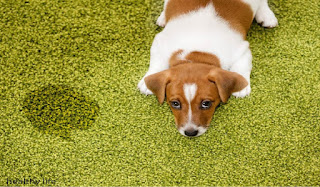
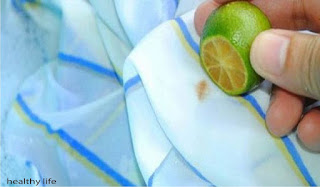

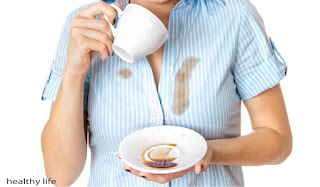
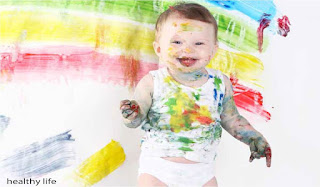

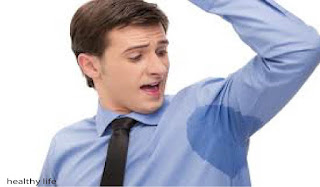

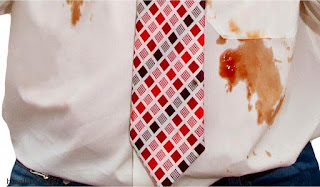
Post a Comment